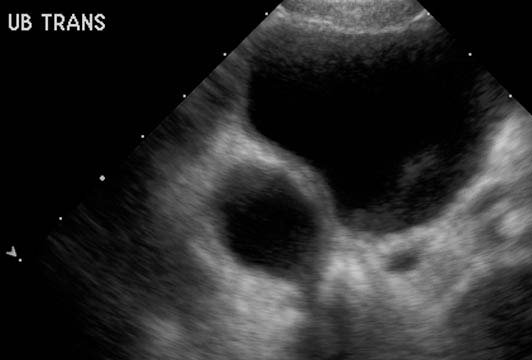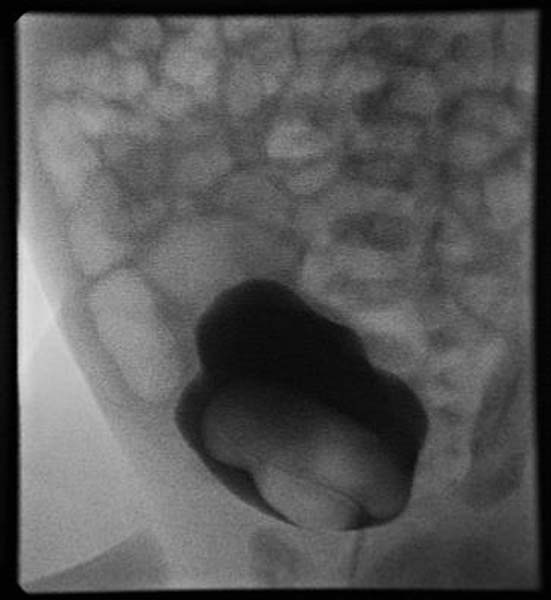Ureterocele
For patient information page click here
| Ureterocele | |
 | |
|---|---|
| ICD-10 | N28.8 |
| ICD-9 | 593.89, 753.23 |
| DiseasesDB | 33455 |
| MeSH | D014518 |
Template:Search infobox Steven C. Campbell, M.D., Ph.D.
Overview
A ureterocele is a congenital abnormality found in the urinary bladder. In this condition called ureteroceles, the distal ureter balloons at its opening into the bladder, forming a sac-like pouch. It is most often associated with a double collector system, where two ureters drain their respective kidney instead of one. Simple ureteroceles, where the condition involves only a single ureter, represents only twenty percent of cases.
Ureteroceles strikes only one in 4,000 individuals, at least four fifths of whom are female. Patients are frequently Caucasian.
Causes
Definitive causes of ureteroceles have not been found. While the abnormal growth occurs within the uterus, it has not been substantiated that genetics are to blame.
Signs and symptoms
The signs and symptoms of ureteroceles in the latter two forms can easily be confused with other medical conditions. Symptoms can include:
- Frequent urinary tract infection
- Urosepsis
- Obstructive voiding symptoms
- Urinary retention
- Failure to thrive
- Hematuria
- Cyclic abdominal pain
- Ureteral calculus
Diagnosis
Since the advent of the ultrasound, most ureteroceles is diagnosed prenatally. The pediatric and adult conditions are often found only through diagnostic imaging performed for reasons other than suspicious ureteroceles.
Imaging studies
- At US, the ureterocele is identified as a cystic intravesical mass contiguous with a dilated ureter.
- At VCUG, a collapsed simple ureterocele usually manifests as a rounded filling defect within the bladder.
- When performed, IVU will usually demonstrate a collection of contrast material within the ureterocele, which produces the classic cobra head sign consisting of a round or oval area of increased opacity surrounded by the radiolucent halo of the wall of the ureterocele.
Patient #1
Patient #2
Complications
Many other complications arise from ureteroceles. Redundant collection systems are usually smaller in diameter than single, and predispose the patient to impassable kidney stones. The effective "bladder within a bladder" compounds this problem by increasing the collision of uric acid particles, the process by which uric acid stones are formed. Ureteroceles is also associated with poor kidney function. It can cause frequent blockage of the ureter leading to serious kidney damage. In other cases, a small, upper portion of the kidney is congenitally non-functional. Though often benign, this problem can necessitate the removal of non-functioning parts.





